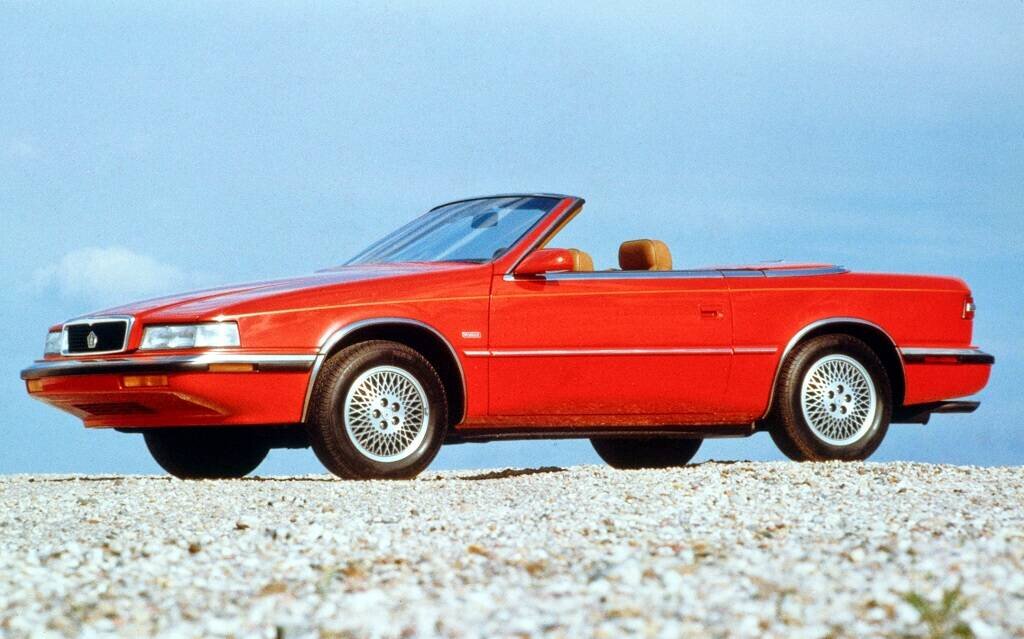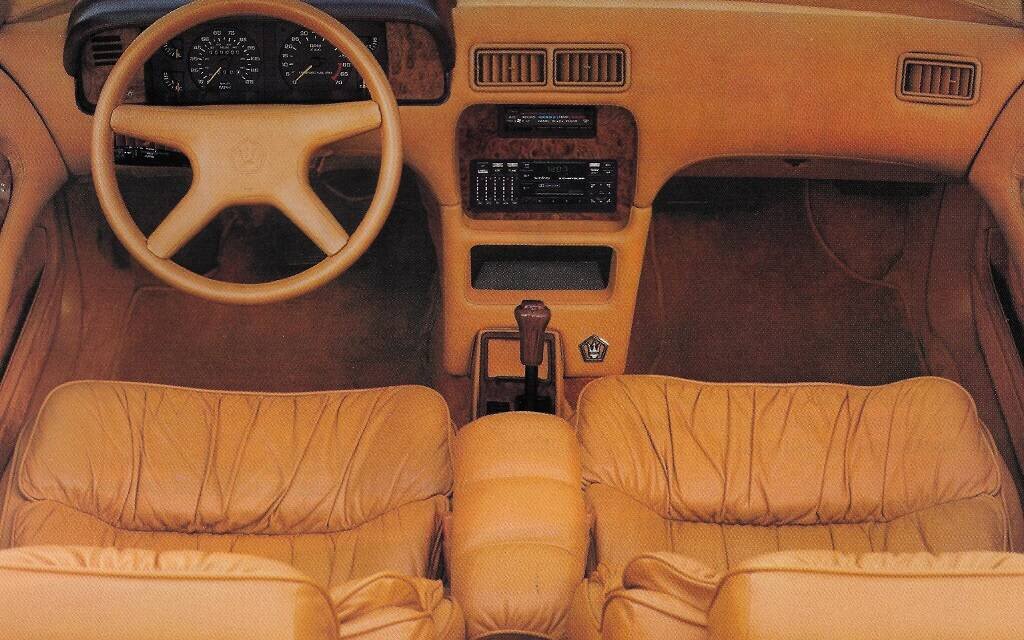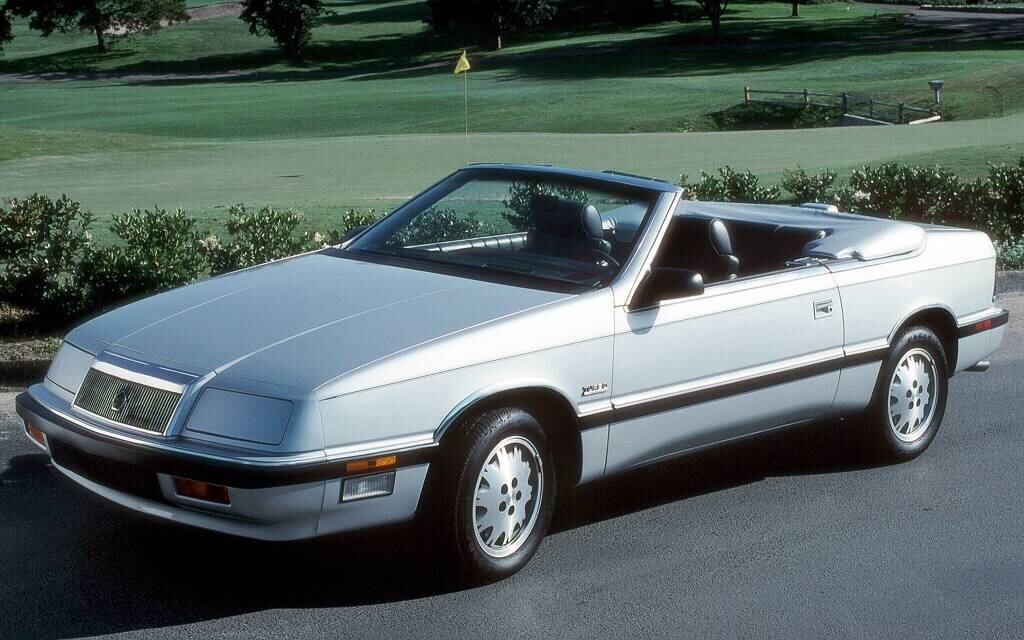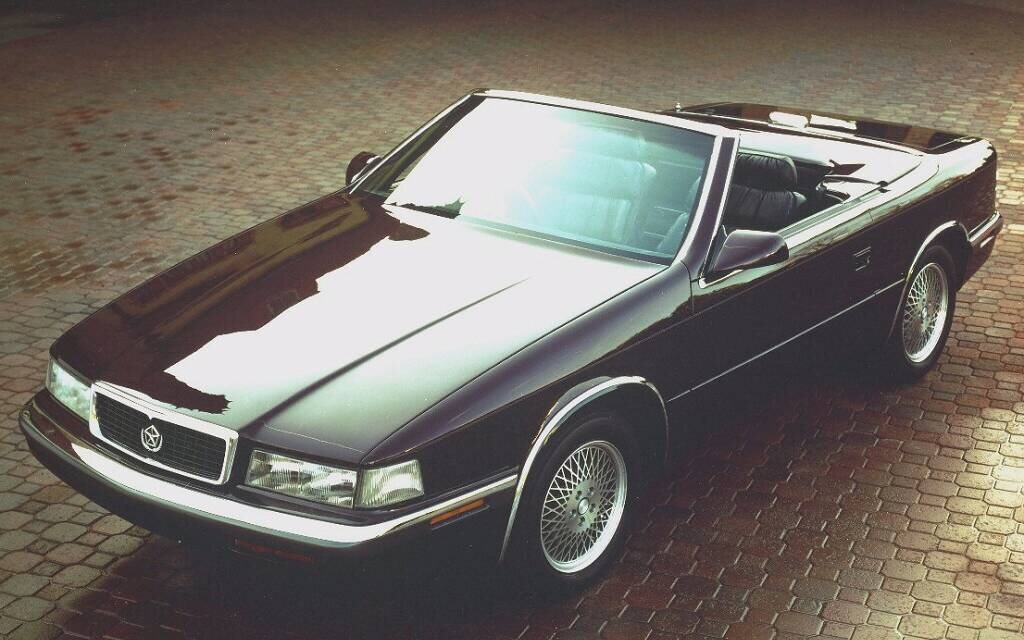While Chrysler (temporarily) regained financial health in the mid-1980s, the corporation felt the urge to compete with Mercedes, Jaguar or even Cadillac. But the alliance with a prestigious name will do nothing to save this poorly thought out project from the start.
At the end of the 1970s, Chrysler was on life support. The situation will require all the negotiating skills of Lee Iacocca, who became president of the corporation in 1978, to obtain a guaranteed loan of 1.5 billion dollars from the American government. This loan will be repaid in full, in advance and with interest, in 1983. From there, Chrysler will embark on a frenzy of purchases and collaborations, which will often prove disastrous.
Photo: Chrysler
The Italian sector
Lido Anthony Iacocca, known as Lee, is an Italian immigrant. Joined Ford in 1946, he quickly rose through the ranks to become its president in 1970. Iacocca has an incredible flair for sensing fashions and developing products in tune with the times. For all, he will remain the spiritual father of the Mustang. But his flamboyant style contrasts with the one whose name is on the letterhead: Henry Ford II. The latter will dismiss him on July 13, 1978. He is quickly hired by a moribund Chrysler. Iacocca obtains the federal loan, negotiates the concessions of its partners, launches the K-Car then the minivans. In just four years, Chrysler has made a spectacular turnaround. Iacocca now wants to forget the dark years and restore its image with the famous “yuppies”. For this, he will call, as often, on one of his old acquaintances: Alejandro de Tomaso in the case that concerns us.
De Tomaso is an Argentine exile in Italy (and with a father of Italian descent). In 1959, he created his own brand and presented his first road car, the Vallelunga, in 1964. Despite his many victories at Le Mans, Ford had not yet digested the failure of the takeover of Ferrari and joined forces with de Tomaso to market the Pantera in 1970. This exotic Italian car with Ford engine will have a limited career in North America, it will nevertheless be produced until 1996 (Tim Horton will kill himself driving a Pantera in 1974). It was Iacocca who was in charge of the project at Ford and the two men gradually became friends. De Tomaso is an industrialist at heart and acquires, among others, Benelli, Moto Guzzi, Ghia and Innocenti. In 1975, he bought, with the help of the Italian State, Maserati from Citroën (owner since 1968). The brand is in bad shape but finds a second wind from 1981 with the introduction of the Biturbo, which will know many derivatives until 1996.

Photo: Chrysler
Sun shining
Arrived at Chrysler, Iacocca called on his Argentinian friend for the first time in 1980 by affixing the name “De Tomaso” to a limited edition of the 024 coupé, based on the L platform of the front-wheel drive Dodge Omni. In June 1984, the two men signed a collaboration agreement: Chrysler took 5% of Maserati and the Italian brand ensured the development and manufacture of a “special” model for the Pentastar under the name “Q-Coupe”.
The fruit of this collaboration was presented at the 1986 Los Angeles Motor Show. The Chrysler TC by Maserati (for Touring Convertible or Turbo Convertible depending on the sources) is based on the modified chassis of the 1984 Dodge Daytona (itself largely derived from K-Cars ) and is therefore front-wheel drive. Under pleasant but not very original lines (made by Tom Gale), there are many components from K-Cars. Technically, the TC is distinguished by its ABS Teves, its Fitchel & Sachs shock absorbers, its Fondmetal wheels (wheel suppliers for F1) and one of its engines. The manual versions (with a 5-speed Getrag gearbox) are entitled to a unit developed by Maserati based on the Chrysler 2.2-litre turbo 4-cylinder. The Italians designed new 16-valve cylinder heads (to be manufactured at Cosworth in England) as well as new manifolds, pistons and crankshaft. The result produces 200 horsepower and 220 lb-ft of torque. Those who want an automatic will find themselves with a deflated 160 horsepower variant of the Chrysler “Turbo II” engine with a 3-speed A413 transmission.

Photo: Chrysler
The interior of this strict two-seater is lined with soft leather and receives wood. There are many Chrysler components, however, some touches – like the gold analog clock in the center of the dashboard – recall the affiliation with Maserati. The soft top is electric and a removable hardtop (with a round window directly inspired by the 1956 Thunderbird) will come standard.
The TC will be manufactured at the Innocenti factory in Lambrate, on the outskirts of Milan, and the first vehicles are supposed to arrive on the American and Canadian markets in the spring of 1987. We are then talking about sales of 5,000 or even 10,000 copies per year at 300 selected dealers. Chrysler appears to have been pleased with the development of the car as it increased its stake in Maserati to 15.6% in May 1986 (with stock options to take a controlling 51% stake by 1995).
The storm
Only then, time passes and still no TC by Maserati at dealerships. Production fails to start at Lambrate. Tension mounts between the Italian and American teams over quality control and several finishing details. The TC receives many modifications (in particular the dashboard where the Maserati watch disappears). The press calls it “Tomorrow’s Car” and the magazine Automotive News named her his “Flop of the Year” for 1988.
The first cars finally arrived – almost two years late – in December 1988 for the 1989 vintage, and only in California to begin with. They are offered at a price of 30,000 US dollars (33,000 within three months). They are more or less well equipped: air conditioning, electric seats, tilt steering wheel, Infinity audio system with 10 cassette speakers (the CD player is optional) and an umbrella (placed in the compartment behind the seats). On the other hand, in terms of performance and handling, we are far, very far, from the competitors: Mercedes SL, Jaguar XJ-S or even Cadillac Allanté. And then there’s the quality of finish and the reliability which are… let’s say… hit or miss. What some have suspected for a while is confirmed: Iacocca has lost his flair. In its 1989 edition, the Car guide makes a prediction: “We can say right now that it will be a monumental flop”. And if it was just that…

Photo: Chrysler
Internal competition
The biggest bullet fired in the foot of the TC by Maserati comes from…Chrysler, in the form of the LeBaron coupés and convertibles, facelifted for the 1987 model year. The original plan was to launch the TC first and then the LeBarons, which would benefit then from the image effect of the TC. But the project was so delayed by Maserati that the LeBarons arrived on the market first. Similar in looks, they offered 4 seats, turbocharged engines, good equipment, all for just US$13,995.
Buyers were not mistaken: in 1989, only 3,764 copies of the TC were sold (in comparison, Cadillac sold 3,296 Allanté the same year, a car that was nevertheless sold for almost twice as much, so that Chrysler marketed 37,489 LeBaron convertibles). In Canada, the situation is simple: Chrysler has simply not denied selling the TC officially (a few cars will cross the border, however). We feel the enthusiasm…
The 1990 vintage brought a limited set of changes: the automatic 4-cylinder Turbo II was replaced by a 141 horsepower 3.0-litre V6 supplied by Mitsubishi and mated to an A604 4-speed automatic gearbox, the steering wheel received a wood finish and an airbag as new colors are introduced. The price increases to $35,000. Logically, customers do not rush to the doors of dealers: 1,900 sales.

Photo: Chrysler
Storm
From 1989, nothing went well between the two partners. All development projects are stopped (including that of a V6 sedan) and a new contract stipulates that Chrysler will stop taking delivery of the TCs after the production of the 7,300th example. Logically, there are no changes for 1991 (apart from the price which climbs to $37,000) and Chrysler manages with difficulty and misery to sell the last 1,636 convertibles. It is estimated that only 500 vehicles will have received the Maserati engine with the manual gearbox.
Chrysler will resell its shares in Maserati (at the same time, Fiat will return to the capital of the Italian brand). Iacocca will say that it is the worst transaction he has ever made (which remains to be proven…). De Tomaso will be furious and the two men will be forever angry. Later, Bob Lutz, who was then number 2 at Chrysler, will explain that once the accounts are made, the TC will have cost Chrysler the trifle of 600 million dollars. Which means that the company lost an average of $82,191 for each vehicle sold around $35,000. Finally, we know what TC means: Too Expensive!
